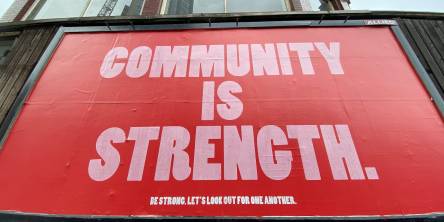How Philanthropy Is Shaping the Future of Social Innovation

Table of Contents
- What Is Social Innovation?
- The Role of Philanthropy in Social Change
- Key Characteristics of Socially Innovative Projects
- The Future of Philanthropic Support for Innovation
- Taking Action: How You Can Support Social Innovation
What Is Social Innovation?
Social innovation signifies the development of new methods and strategies that address society’s complex challenges with creative, effective, and sustainable solutions. It is much more than simply tweaking existing programs—it calls for reimagining the way needs are met, focusing on creating lasting, positive impacts for communities. Rather than acting alone, transformative ideas often flourish from collaboration among nonprofits, governments, businesses, and everyday citizens. Visionary figures have demonstrated that cross-sector partnerships and innovation can bridge critical resource gaps, offering scalable solutions for pressing global issues such as access to clean water, renewable energy, and poverty alleviation.
The heart of social innovation lies in addressing the root causes of systemic social problems rather than merely treating their symptoms. Groups around the world increasingly rely on social innovation to shape programs that truly move the needle, from grassroots campaigns in local neighborhoods to policy-shifting models implemented at national levels. This renewed focus on creative approaches reflects a broader shift in societal expectations: today’s changemakers seek more than fleeting charity—they want to generate lasting improvement, expand opportunities, and empower communities in meaningful ways.
Read more: Improve Your Community App: Important Features & Functions You Should Know
The Role of Philanthropy in Social Change
Over the past decade, philanthropic investment in social innovation has reached unprecedented heights. Donors and foundations are no longer content with offering one-off financial injections; they pursue active roles in co-creating, scaling, and evaluating the initiatives they fund. The shift toward strategic philanthropy is rooted in a desire to address systemic problems in ways that create ripple effects across societies. Not only do today’s philanthropists fund programs, but many serve as connectors, introducing innovators to new networks and breaking down barriers to collaboration. This strategic role is transforming the sector's DNA, enabling solutions that are data-driven and adaptable in rapidly changing contexts.
Unlike traditional charitable giving, which may fill immediate resource gaps, modern philanthropy is increasingly focused on reshaping broken systems for enduring results. As described by Investopedia, philanthropy involves more than just giving; it reflects a commitment to promoting human welfare through sustained, strategic efforts. Funders often embrace longer timelines and are willing to experiment with new funding models, such as impact investing or catalytic capital, that absorb higher levels of risk for potentially greater social returns. By supporting early-stage innovations, these donors open doors for pilot projects that might otherwise go unfunded, offering a pathway for remarkable ideas to prove their effectiveness and then expand. The legacy of this movement is evident in the way entire sectors, from education to clean energy, have been transformed by persistent, data-driven giving.
Key Characteristics of Socially Innovative Projects
- Collaboration: Social innovation thrives on collective effort. Many groundbreaking projects unite government agencies, local nonprofits, academic researchers, business leaders, and impacted communities. By bringing together people with diverse backgrounds and skill sets, these projects uncover hidden opportunities and create holistic approaches tailored to local and global needs.
- Scalability: Solutions that work in one place can often be adapted to work in many. The best social innovation projects are structured to be easily replicated and scaled while remaining sensitive to unique cultural and social contexts. Organizations often start small, gather feedback, and adjust their model with the aim of reaching larger populations over time.
- Measurability: Accountability is crucial for building trust. Highly effective projects incorporate robust metrics and assessment tools from the outset, enabling ongoing learning and ensuring that efforts genuinely improve lives. Project leaders use data to demonstrate impact, attract more funding, and inspire confidence among stakeholders.
The Future of Philanthropic Support for Innovation
As digital technology transforms society, the ways in which philanthropy supports innovation are also evolving. Advances in data analytics enable foundations to more effectively identify unmet needs, track projects, and measure long-term benefits. Online giving platforms are democratizing philanthropy, opening the door for people of all backgrounds to fund and follow causes they care about.
Looking forward, trends indicate even greater transparency, a growing number of participatory funding models, and stronger global partnerships. The sector is moving toward a future where rigorous measurement and shared learning are the norm. The ability of philanthropy to adapt and experiment will remain central, ensuring resources reach the most promising innovations and that no worthwhile idea is left unsupported.
Taking Action: How You Can Support Social Innovation
Supporting social innovation is accessible to nearly everyone. Volunteering your time, expertise, or resources to mission-driven organizations can be just as valuable as financial support. Individuals can also contribute by spreading awareness, making small but regular donations to vetted initiatives, or even starting their projects in partnership with established groups.
Another powerful way to make an impact is to research and support impact funds or community foundations with a track record of empowering grassroots innovation. Every small action counts, and when multiplied across many individuals, these efforts can spark the next wave of transformative solutions. Bringing people together, staying curious, and being open to new ways of giving are key ingredients for building a better world—one innovative idea at a time.
Similar Articles
Smoke and flames from wildfires can harm communities, ecosystems, and animals. Beating back these blazes requires complex orchestration between on-ground crews, technology, and one key role that is underrated: the pilot of firefighting aircraft
Explore how non-profit councils enhance lives of individuals with developmental disabilities through advocacy, education, and community programs, fostering inclusion and empowerment.
Did you know that approximately 7.3 million individuals received disabled worker insurance from Social Security as of April 2024? Beneficiaries can receive monthly payments that are intended to help cover living expenses while they are unable to work.
Discover the benefits of 55+ communities designed for active, engaging lifestyles. Learn how to choose the right fit for your needs, preferences, and budget.
Elevate your community app with key features & functions! Follow our step-by-step guide to enhance user engagement and maximize app potential.
At first glance, the humble shipping container might not look like much: just a simple steel box we pack things into for transportation. Take a closer look, however, and you’ll realize that this seemingly modest box has had a profound effect on our world, becoming an integral part of the modern society we currently live in.






